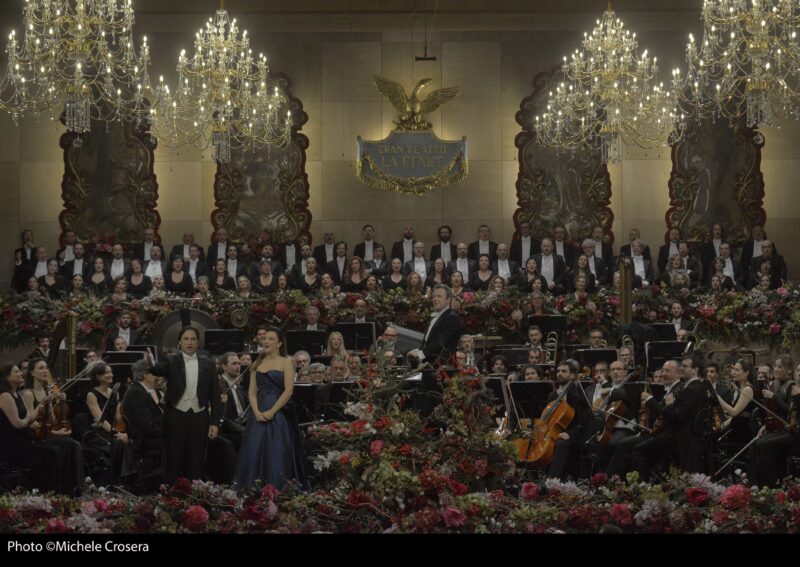Attracting headlines the way that its visual art and cinema siblings regularly do, the famed concert was conducted by Daniel Harding and sung by soprano Mariangela Sicilia and tenor Francesco Demuro.
THE traditional appointment with the New Year’s Concert at La Fenice Theatre was back in full swing at the start of 2025. Conducted by Daniel Harding and accompanied by two stellar leads: soprano Mariangela Sicilia and Grammy-nominated tenor Francesco Demuro.
The programme consisted of two parts: an exclusively orchestral section with a performance of Ludwig van Beethoven’s Symphony No. 5 in C minor and dedicated to melodrama, with a roundup of arias and choral works from the best-loved opera repertoire, concluding with ‘Va, Pensiero, sulla dorate’ from Giuseppe Verdi’s Nabucco, ‘Padre Augusto’ from Giacomo Puccini’s Turandot, and the toast ‘Libiam ne’ lieti calici’ from Verdi’s Traviata.

New Year’s Day Concert at La Fenice Theatre
The event is always produced in co-production with Rai Cultura and in collaboration with Regione del Veneto, with the contribution of Forno Bonomi. Live streaming was planned for WDR, ART and BR, which will broadcast the concert worldwide. Intesa Sanpaolo is the main partner of the entire programme at Teatro La Fenice. During the live television broadcast on Rai1, live images of the concert were interspersed with choreography created for the occasion by Marcos Morau for the artists of Aterballetto (founded in Reggio Emilia in 1977) who danced in renowned settings of the city.
The musical programme opened with the Fifth Symphony in C minor op. 67 by Ludwig van Beethoven (1770-1827), perhaps the most universally known of the German composer’s symphonies: with its four lapidary notes of the famous attack, Fate Beating at the door, it is undoubtedly the most paradigmatic of Beethoven’s symphonic.

New Year’s Day Concert at La Fenice Theatre
It had a particularly long and complex genesis: the Bonn master began composing it at the time of the completion of the Eroica, dedicated himself intensively to it, especially in 1807, and completed it, after numerous remakes, in early 1808. The first public performance occurred on 22 December 1808 at the Theater An der Wien in Vienna, in an all-Beethovenian concert conducted by the composer.
The second part of the setlist featured a series of much-loved pieces from the opera repertoire by Rossini, Leoncavallo, Puccini, Wolf-Ferrari, Bizet, Gounod and Verdi. It will kick off with the Sinfonia from Gioachino Rossini’s Gazza Ladra, followed by Ruggero Leoncavallo’s chorus from Pagliacci ‘Din, don, suona vespero’. This was followed by two Puccini songs, performed by tenor and soprano respectively: ‘Recondita armonia’ from the Tosca and ‘Donde lieta uscì’ from the Bohème.
Two instrumental pieces then followed: the intermezzo from Ermanno Wolf-Ferrari’s Quatro Rusteghi and the Farandole from the second suite from Georges Bizet’s Arlésienne. The programme continued with two great classics from the melodramatic repertoire, once again performed by soprano and tenor: ‘Je veux vivre dans le rêve’ from Roméo et Juliette by Charles Gounod and “Nessun dorma” by Puccini.
by Chidozie Obasi
